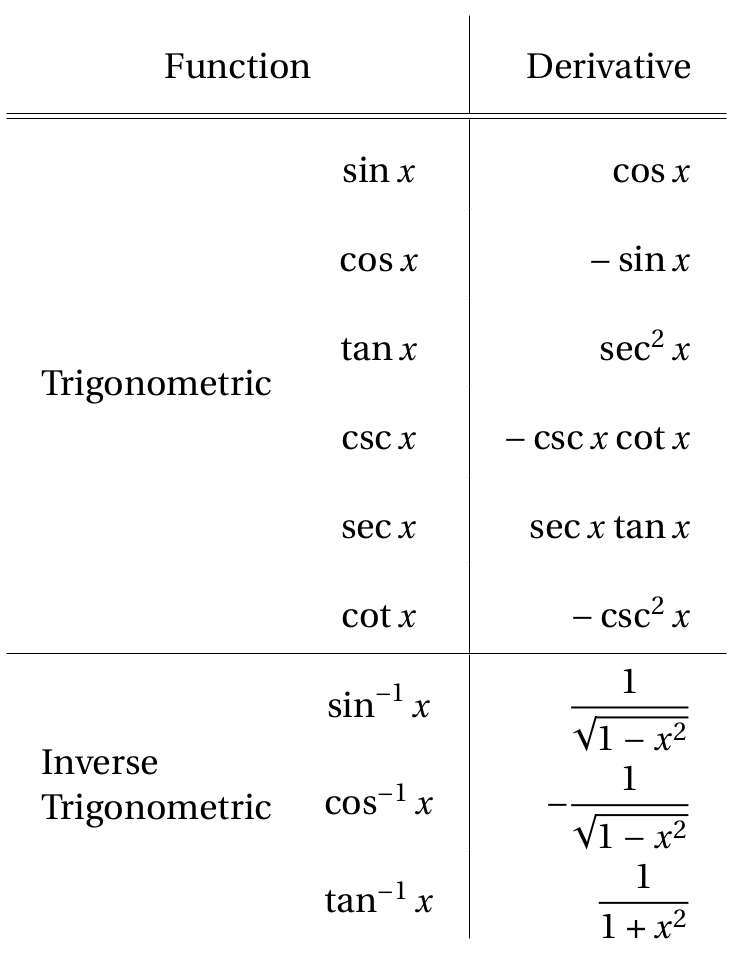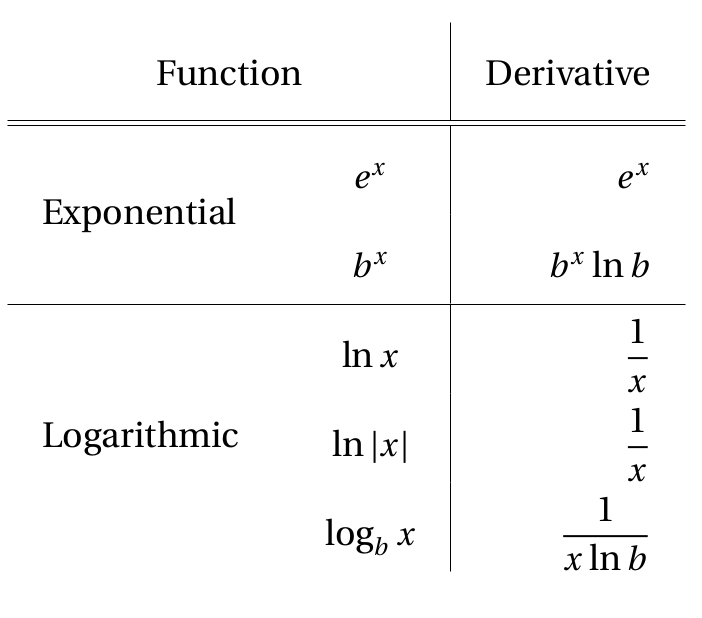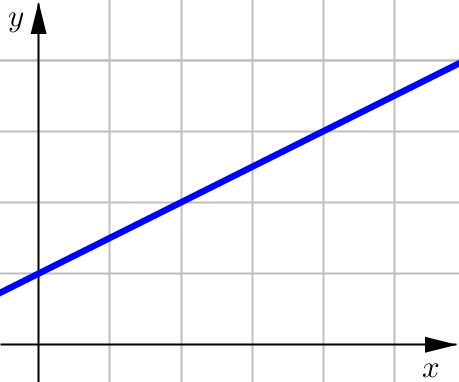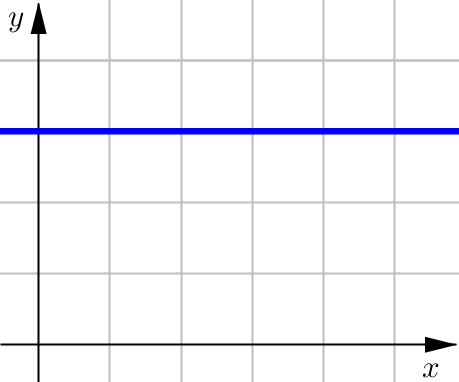(D1) Basic Derivative Rules#
By the end of the lesson you will be able to:
compute derivatives of basic functions (derivatives that can ultimately be solved by using the sum/difference, or constant multiple rules in conjunction with our list of elementary forms and the power rule).
Lecture Videos#
Slope of a Curve and the Derivative#
The main focus of this lesson will be to introduce the fundamental rules for quickly calculating the derivative of a function. We will see the power rule, constant-multiple rule, sum rule, and then our list of elementary form derivatives.
Before we get there though, it is good to remind ourselves that the derivative is really related to the slope of the curve. This is very apparent if we consider the derivative of two basic functions, a linear function of the form \(f(x)=mx+b\) and a constant function \(f(x)=b\).
Power Rule#
Power Rule
If \(f(x)=x^r\) then
We tend to think of the power rule as a 3-step process:
Bring down the old exponent and put it in front.
Keep the variable the same.
Subtract 1 from the old exponent to get the new exponent.
Example 1#
Compute \(f'(x)\) for each of the following functions:
\(f(x)=x^2\)
\(f(x)=x^3\)
\(f(x)=\sqrt{x}\)
\(f(x)=1/x\)
Differentiate the function: \(f(x)=x^2\).
This is a power function, so we can directly apply the power rule:
Differentiate the function: \(f(x)=x^3\).
Another power function, so we can directly apply the power rule again:
Note that we don’t normally show the \(3x^{3-1}\) step in our work, we’re only doing it now because these are the first few examples of using power rule.
Differentiate the function: \(f(x)=\sqrt{x}\).
For this one, we have a root function that needs to be rewritten first before we can actually apply the power rule:
Now we’re ready for the power rule:
Differentiate the function: \(f(x)=\dfrac{1}{x}\).
As written this function is a quotient and so power rule is not immediately applicable. However, we can rewrite this fraction using negative exponents to get into a better form (for using power rule):
Now we’re ready for the power rule:
Constant-Multiple Rule#
Constant-Multiple Rule
For constant \(k\):
Essentially, this rule tells us that we can bring any constant multiples outside of the derivative.
Focus on differentiating the variable part.
And then any constant multiple that was in the original function stays in the derivative as well.
Example 2#
Differentiate the following:
\(\dfrac{d}{dx}\big[2x^5\big]\)
\(\dfrac{d}{dx}\bigg[\dfrac{x^3}{4}\bigg]\)
\(\dfrac{d}{dx}\bigg[-\dfrac{3}{x^2}\bigg]\)
\(\dfrac{d}{dx}\big[5\sqrt[3]{x}\big]\)
Calculate the derivative: \(\dfrac{d}{dx}\big[2x^5\big]\).
The function here is a constant multiple of a power function, so we will first want to apply the constant multiple rule and then to finish, the power rule.
Calculate the derivative: \(\dfrac{d}{dx}\bigg[\dfrac{x^3}{4}\bigg]\).
Before we use the constant-multiple rule, we need to separate the constant and variable pieces of this function:
Doing this, allows us to identify the \(\tfrac{1}{4}\) constant multiple.
Calculate the derivative: \(\dfrac{d}{dx}\bigg[-\dfrac{3}{x^2}\bigg]\).
This function is a quotient with a variable term in the denominator, and as we’ve seen it will be helpful to rewrite this fraction using negative exponents:
Now we can start the differentiation:
Calculate the derivative: \(\dfrac{d}{dx}\big[5\sqrt[3]{x}\big]\).
Another root function, another helpful rewrite (so we can later use power rule):
Now for the differentiation:
Sum Rule#
Sum Rule
Given differentiable functions \(f\) and \(g\):
This rule also works for subtraction:
Essentially, this rule tells us that we can split up the derivative at \(+\) and \(-\) signs. We generally call this term-by-term differentiation.
Write each term in the form \(ax^r\) (where applicable)
Differentiate each term separately.
Keep the original addition or subtraction signs.
Example 3#
Differentiate the following:
\(\dfrac{d}{dx}\big[x^3+5x\big]\)
\(\dfrac{d}{dx}\bigg[x^4-\dfrac{3}{x^2}\bigg]\)
\(\dfrac{d}{dx}\big[2x^7-x^5+8\big]\)
Calculate the derivative: \(\dfrac{d}{dx}\big[x^3+5x\big]\).
Calculate the derivative: \(\dfrac{d}{dx}\bigg[x^4-\dfrac{3}{x^2}\bigg]\).
Calculate the derivative: \(\dfrac{d}{dx}\big[2x^7-x^5+8\big]\).
Other Variables#
Sometimes we use variables other than \(x\) and \(y\), but the differentiation process is essentially the same. Consider two different instances of the “squared” function: similar expressions, with different variables:
The Leibniz notation for the derivative is helpful here, since it gives us an indication of the variable we are differentiating with respect to. For instance when we write \(\dfrac{dy}{dx}\):
the \(y\) tells us that we are differentiatng an expression with the name \(y\).
the \(x\) tells us that the independent variable we are differentiatng with respect to is \(x\).
To see this in action, let’s try a little example:
Calculate the derivative \(\dfrac{d}{dt}\big[at^2+St^{-1}+S^2\big]\)
The first step is to identify which variable we are differentiating with respect to. We see that the derivative operator is \(\dfrac{d}{dt}\), so this means \(t\) is our variable. Thus, for the purposes of calculating this derivative:
\(t\) is the variable
\(a\), \(S\) are constants
Now, we can just go through our usual term-by-term differentiation. Since we are treating \(a\) and \(S\) like constants, we can use the constant-multiple rule to bring them outside the differentiation for the first two terms.
(Note that since \(S\) is a constant, its derivative is \(0\).)
Elementary Forms#
All (or almost all) of the functions we will be discussing in this course are some algebraic combination of power, trigonometric, inverse trigonomentric, exponential, or logarithmic functions. It sure would be nice to know the derivative of these elementary functions.
A few comments about the functions listed in the tables below:
When we talk about trigonometric functions, the variable is understood to be in radians not degrees. This is a convention that we will be using throughout the course. Why is this? The derivative rules listed below are for the radian versions, they would be slightly more complicated if we were using degrees.
Hint: If the trigonometric functions begins with the letter “c” then there is a minus sign in the derivative.
The most common of the inverse trigonometric functions are listed below. There are also derivative formulas for \(\csc^{-1}x\), \(\sec^{-1} x\), and \(\cot^{-1} x\).


Example 4#
Differentiate each of the following functions:
\(y=2\sin x +3\tan x\)
\(f(t)=2\sin^{-1} t +3\tan^{-1} t\)
\(g(x)=5e^x+x\sqrt{x}\)
\(h(t)=\dfrac{t^2+1}{t} + 7\ln t\)
Calculate the derivative of the function: \(y=2\sin x +3\tan x\).
Calculate the derivative of the function: \(f(t)=2\sin^{-1} t +3\tan^{-1} t\).
Calculate the derivative of the function: \(g(x)=5e^x+x\sqrt{x}\).
Before we start differentiating this function we need to first rewrite the second term. As written, it’s a product of two \(x\)-terms, not currently in a format we can differentiate:
Calculate the derivative of the function: \(h(t)=\dfrac{t^2+1}{t} + 7\ln t\).
Before we start differentiating this function we need to first rewrite the first term. As written, it’s a quotient of two variable-terms, not currently a format we can differentiate:
Example 5#
If \(s=t^3-2t^2+3t\), find
Before we do any evaluation, we first need to calculate the derivatives.
Differentiating we get:
Now we’re ready to evaluate:
In order to calculate the second derivative, we differentiate the first derivative:
Then we apply the usual Sum and Constant-Multiple Rule combination:
(When differentiating the \(3\), remember that the derivative of a lone constant term is 0.)
Now we’re ready to evaluate:


